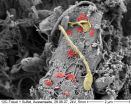(Press-News.org) Higher rates of schizophrenia in urban areas can be attributed to increased deprivation, increased population density and an increase in inequality within a neighbourhood, new research reveals. The research, led by the University of Cambridge in collaboration with Queen Mary University of London, was published today in the journal Schizophrenia Bulletin.
Dr James Kirkbride, lead author of the study from the University of Cambridge, said: "Although we already know that schizophrenia tends to be elevated in more urban communities, it was unclear why. Our research suggests that more densely populated, more deprived and less equal communities experience higher rates of schizophrenia and other similar disorders. This is important because other research has shown that many health and social outcomes also tend to be optimal when societies are more equal."
The scientists used data from a large population-based incidence study (the East London first-episode psychosis study directed by Professor Jeremy Coid at the East London NHS Foundation Trust and Queen Mary, University of London) conducted in three neighbouring inner city, ethnically diverse boroughs in East London: City & Hackney, Newham, and Tower Hamlets.
427 people aged 18-64 years old were included in the study, all of whom experienced a first episode of psychotic disorder in East London between 1996 and 2000. The researchers assessed their social environment through measures of the neighbourhood in which they lived at the time they first presented to mental health services because of a psychotic disorder. Using the 2001 census, they estimated the population aged 18-64 years old in each neighbourhood, and then compared the incidence rate between neighbourhoods.
The incidence of schizophrenia (and other similar disorders where hallucinations and delusions are the dominant feature) still showed variation between neighbourhoods after taking into account age, sex, ethnicity and social class. Three environmental factors predicted risk of schizophrenia – increased deprivation (which includes employment, income, education and crime) increased population density, and an increase in inequality (the gap between the rich and poor).
Results from the study suggested that a percentage point increase in either neighbourhood inequality or deprivation was associated with an increase in the incidence of schizophrenia and other similar disorders of around 4%.
Dr Kirkbride added: "Our research adds to a wider and growing body of evidence that inequality seems to be important in affecting many health outcomes, now possibly including serious mental illness. Our data seems to suggest that both absolute and relative levels of deprivation predict the incidence of schizophrenia.
"East London has changed substantially over recent years, not least because of the Olympic regeneration. It would be interesting to repeat this work in the region to see if the same patterns were found."
The study also found that risk of schizophrenia in some migrant groups might depend on the ethnic composition of their neighbourhood. For black African people, the study found that rates tended to be lower in neighbourhoods where there were a greater proportion of other people of the same background. By contrast, rates of schizophrenia were lower for the black Caribbean group when they lived in more ethnically-integrated neighbourhoods. These findings support the possibility that the socio-cultural composition of our environment could positively or negatively influence risk of schizophrenia and other similar disorders.
Dr John Williams, Head of Neuroscience and Mental Health at the Wellcome Trust said: "This research reminds us that we must understand the complex societal factors as well as the neural mechanisms that underpin the onset of mental illness, if we are to develop appropriate interventions."
###
For additional information please contact:
Genevieve Maul, Office of Communications, University of Cambridge
Tel: direct, +44 (0) 1223 765542, +44 (0) 1223 332300
Email: communications@admin.cam.ac.uk
Notes to editors:
1. The paper 'Social Deprivation, Inequality and the Neighborhood-Level Incidence of Psychotic Syndromes in East London' will be published on the 14 December online (advanced access) at the Schizophrenia Bulletin website: http://schizophreniabulletin.oxfordjournals.org/content/early/2012/12/12/schbul.sbs151.abstract?ct=ct
2. The Wellcome Trust is a global charitable foundation dedicated to achieving extraordinary improvements in human and animal health. It supports the brightest minds in biomedical research and the medical humanities. The Trust's breadth of support includes public engagement, education and the application of research to improve health. It is independent of both political and commercial interests. www.wellcome.ac.uk
3. The National Institute for Health Research (NIHR) is funded by the Department of Health to improve the health and wealth of the nation through research. Since its establishment in April 2006, the NIHR has transformed research in the NHS. It has increased the volume of applied health research for the benefit of patients and the public, driven faster translation of basic science discoveries into tangible benefits for patients and the economy, and developed and supported the people who conduct and contribute to applied health research. The NIHR plays a key role in the Government's strategy for economic growth, attracting investment by the life-sciences industries through its world-class infrastructure for health research. Together, the NIHR people, programmes, centres of excellence and systems represent the most integrated health research system in the world. For further information, visit the NIHR website.
Schizophrenia linked to social inequality
Urban neighbourhoods with high deprivation, population density and inequality found to have higher rates of schizophrenia
2012-12-14
ELSE PRESS RELEASES FROM THIS DATE:
NHS consultant contract fails to increase productivity
2012-12-14
An employment contract for NHS consultants introduced in 2003 and including a 27 per cent pay rise over three years failed to increase productivity. The findings emerge from a 10-year study of hospital consultant activity, published today by the Journal of the Royal Society of Medicine, which looked at the levels of consultant clinical activity rates between 1999 and 2009. The researchers found that, despite an expectation by the Department of Health that the contract would result in year-on-year productivity gains of 1.5%, consultant activity levels showed a downward trend. ...
Changes in the gut bacteria protect against stroke
2012-12-14
Researchers at the University of Gothenburg, Sweden, and the Chalmers University of Technology, Sweden, demonstrate that an altered gut microbiota in humans is associated with symptomatic atherosclerosis and stroke. These findings are presented in a study published in Nature Communications on December 4.
The human body contains ten times more bacterial cells than human cells, most of which are found in the gut. These bacteria contain an enormous number of genes in addition to our host genome, and are collectively known as the gut metagenome.
How does the metagenome ...
Pitt Cancer Institute finds new targets for drugs to defeat aggressive brain tumor
2012-12-14
PITTSBURGH, Dec. 13, 2012 – University of Pittsburgh Cancer Institute (UPCI) researchers have identified over 125 genetic components in a chemotherapy-resistant, brain tumor-derived cell line, which could offer new hope for drug treatment to destroy the cancer cells.
The results will be reported in the cover story of December's issue of the journal Molecular Cancer Research, to be published Dec. 18 and currently available online.
The potential drug targets were identified after testing more than 5,000 genes derived from glioblastoma multiforme, an aggressive brain ...
Fertile soil doesn't fall from the sky
2012-12-14
This press release is available in German.
Leipzig. Remains of dead bacteria have far greater meaning for soils than previously assumed. Around 40 per cent of the microbial biomass is converted to organic soil components, write researchers from the Helmholtz Centre for Environmental Research (UFZ), the Technische Universität Dresden (Technical University of Dresden) , the University of Stockholm, the Max-Planck-Institut für Entwicklungsbiologie (Max Planck Institute for Developmental Biology) and the Leibniz-Universität Hannover (Leibniz University Hannover) in the ...
Male bushcrickets are in charge when it comes to sex
2012-12-14
This press release is available in German.
All a question of timing: When bushcrickets mate, the male attaches a sticky package, the so-called spermatophore, to the female's abdomen. Alongside the sperm themselves, this 'bridal present' consists of a protein-rich mass that the female eats after mating. It then takes several hours for the sperm to find their way into the female's reproductive tract. But, who decides when that will happen? A study by the Bielefeld biologists Professor Dr. Klaus Reinhold and Dr. Steven Ramm suggests that it is the male who determines the ...
What mechanism generates our fingers and toes?
2012-12-14
Montréal, December 14, 2012 – Dr. Marie Kmita and her research team at the IRCM contributed to a multidisciplinary research project that identified the mechanism responsible for generating our fingers and toes, and revealed the importance of gene regulation in the transition of fins to limbs during evolution. Their scientific breakthrough is published today in the prestigious scientific journal Science.
By combining genetic studies with mathematical modeling, the scientists provided experimental evidence supporting a theoretical model for pattern formation known as the ...
Study fuels insight into conversion of wood to bio-oil
2012-12-14
New research from North Carolina State University provides molecular-level insights into how cellulose – the most common organic compound on Earth and the main structural component of plant cell walls – breaks down in wood to create "bio-oils" which can be refined into any number of useful products, including liquid transportation fuels to power a car or an airplane.
Using a supercomputer that can perform functions thousands of times faster than a standard desktop computer, NC State chemical and biomolecular engineer Dr. Phillip Westmoreland and doctoral student Vikram ...
Problems with mineral metabolism linked with kidney disease progression
2012-12-14
Highlights
In a study of African Americans with kidney disease, levels of mineral metabolites rose over time; those with faster rates of kidney function decline had the greatest increases in metabolites.
Higher baseline levels of metabolites were linked with an increased risk for kidney failure or death independent of kidney function.
Disordered mineral metabolism is more severe in African Americans with chronic kidney disease, which might partially explain why their disease progresses more rapidly to kidney failure.
Washington, DC (December 13, 2012) — Abnormalities ...
Researchers identify target to help protect kidney patients' heart health
2012-12-14
Highlights
Blocking the receptor for endothelin lowers novel cardiovascular risk factors in patients with chronic kidney disease independent of blood pressure.
The findings suggest that blocking the receptor may provide heart-related benefits to these patients.
60 million people globally have chronic kidney disease.
Washington, DC (December 13, 2012) — Blocking the receptor for proteins that constrict blood vessels reduces markers of heart-related problems in patients with chronic kidney disease (CKD), according to a study appearing in an upcoming issue ...
More bang for bugs
2012-12-14
A new study from the rainforests of Panama provides an unprecedented level of detail regarding the diversity and distribution of arthropod species from the soil to the forest canopy. Yves Basset, scientific coordinator of the CTFS Arthropod Initiative at the Smithsonian Tropical Research Institute, led an international team on Project IBISCA-Panama to sample, sort, catalogue, and finally estimate that a 6,000 hectare forest hosts a total of around 25,000 arthropod species – a figure vastly outnumbering that of better-studied organisms. The study will be published online ...
LAST 30 PRESS RELEASES:
NTP-enhanced lattice oxygen activation in Ce-Co catalysts for low-temperature soot combustion
Synergistic interface engineering in Cu-Zn-Ce catalysts for efficient CO2 hydrogenation to methanol
COVID-19 leaves a lasting mark on the human brain
Scientists use ultrasound to soften and treat cancer tumors without damaging healthy tissue
Community swimming program for Black youth boosts skills, sense of belonging, study finds
Specific depressive symptoms in midlife linked to increased dementia risk
An ‘illuminating’ design sheds light on cholesterol
Who is more likely to get long COVID?
Study showcases resilience and rapid growth of “living rocks”
Naval Research Lab diver earns Office of Naval Research 2025 Sailor of the Year
New Mayo-led study establishes practical definition for rapidly progressive dementia
Fossil fuel industry’s “climate false solutions” reinforce its power and aggravate environmental injustice
Researchers reveal bias in a widely used measure of algorithm performance
Alcohol causes cancer. A study from IOCB Prague confirms damage to DNA and shows how cells defend against it
Hidden viruses in wastewater treatment may shape public health risks, study finds
Unlock the power of nature: how biomass can transform climate mitigation
Biochar reshapes hidden soil microbes that capture carbon dioxide in farmland
Reducing saturated fat intake shows mortality benefit, but only in high-risk individuals
Manta rays create mobile ecosystems, study finds
Study: Mixed results in using lipoic acid to treat progressive multiple sclerosis
Norbert Holtkamp appointed director of Fermi National Accelerator Laboratory
New agentic AI platform accelerates advanced optics design
Biologists discover neurons use physical signals — not electricity — to stabilize communication
Researchers discover that a hormone can access the brain by hitchhiking
University of Oklahoma researcher awarded funding to pursue AI-powered material design
Exploring how the visual system recovers following injury
Support for parents with infants at pediatric check-ups leads to better reading and math skills in elementary school
Kids’ behavioral health is a growing share of family health costs
Day & night: Cancer disrupts the brain’s natural rhythm
COVID-19 vaccination significantly reduces risk to pregnant women and baby
[Press-News.org] Schizophrenia linked to social inequalityUrban neighbourhoods with high deprivation, population density and inequality found to have higher rates of schizophrenia


